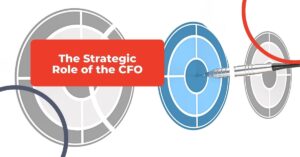How to Reduce Cost in a Manufacturing Company
Jan 7, 2021
Manufacturing involves a complex network of materials, labor, sales, distribution and more. Managing your financials for profitability requires a keen understanding of costs, inventory, overhead and more. Two key elements of improving profitability is costing and customer margins.
Costing and Profitability in Manufacturing
The most obvious effect of inaccurate costing is it leads to poor decisions. If you’re over-costing a product, you’re also over-stating your inventory. And if you’re over-stating inventory, you’ve over-stating profits. This can impact taxes, lending, reporting and more.
- Assigning too much cost to a product can result in overpricing, which can impact marketshare if a competitor has a lower price
- Under-assigning costs could distort the margin. You might think your selling price is adequately covering costs when in fact you’re losing money.
When we’re talking about product costing and improving accuracy, we should explore materials, labor, and overhead.
Materials
Knowing and using just as much materials as you need to manufacture helps create more accurate costing. If you think you have 5% scrap rate, for instance, but you really have 10%, you’re using more materials than you think you are. This will impact inventory management and purchasing down the line, throwing your profitability off.
Labor
If it’s taking longer to produce something than you’ve prepared for, you’ll see distortion in costing. As people or automation costs increase, profitability decreases, so it’s important to realistically manage what it takes in production and reflect those costs in your equations for profitability.
Overhead
Manufacturing Overhead include all the costs associated in supporting the manufacturing operation. Rent and equipment leasing are examples. Three key levers for managing overhead are direct labor, machine hours, and square footage dedicated to production. When looking to improve profitability, these three keys can create direct impact.
Improving Customer Margins to Increase Profitability
With accurate costing managed, make sure your customer margins are allowing for max profitability. Most companies make most of their profits from the top 20% of their customers, but a common mistake is to confuse revenue with profits. Your top 20% revenue-generating customers may not be your most profitable.
Embarking on a profitability analysis means understanding the SGA expenses – Selling, General, and Adminstrative expenses – per customer. This can be a complex study, but it’s worth it to make smarter business decisions for profitability.
A capable CFO with deep manufacturing experience should lead the way on understanding customer margins, costing, and profitability, and where to focus effort. Going past revenue and digging into the fine details of manufacturing will help your manufacturing company know where the biggest levers for profitability exist for you, and how you can save costs and increase profit margins.


